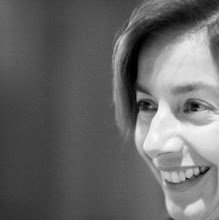Very much inspired by a recent weekend retreat with Mingyur Rinpoche, I was looking for a list of the great contemporary Tibetan Buddhist teachers in America. Finding no such recent list, I decided to put one together. Here it is:
Chskyi Nyima Rinpoche
Tsoknyi Rinpoche
Mingyur Rinpoche
Thrangu Rinpoche
Dzongsar Khyentse Rinpoche
Sakyong Mipham Rinpoche
Dzigar Kongrul Rinpoche
Dzogchen Ponlop Rinpoche
Khandro Rinpoche
Ringu Tulku
Traleg Rinpoche
Phakchok Rinpoche
Phagyab Rinpoche
Of course, any additions, comments on your part are most welcome!
Sources:
- Twitter 'twangha': @pixelsrzen, @NSteinbergOttaw, @LuminousHeart, @electronicist, @Ommane, @NalandaWest
- Waylon Lewis's excellent 2008 list of 'Top 10 Buddhist Teachers in America'
- Pema Chodron's list of teachers
- Google search
- Conversations with members of Tibetan Buddhism community



















